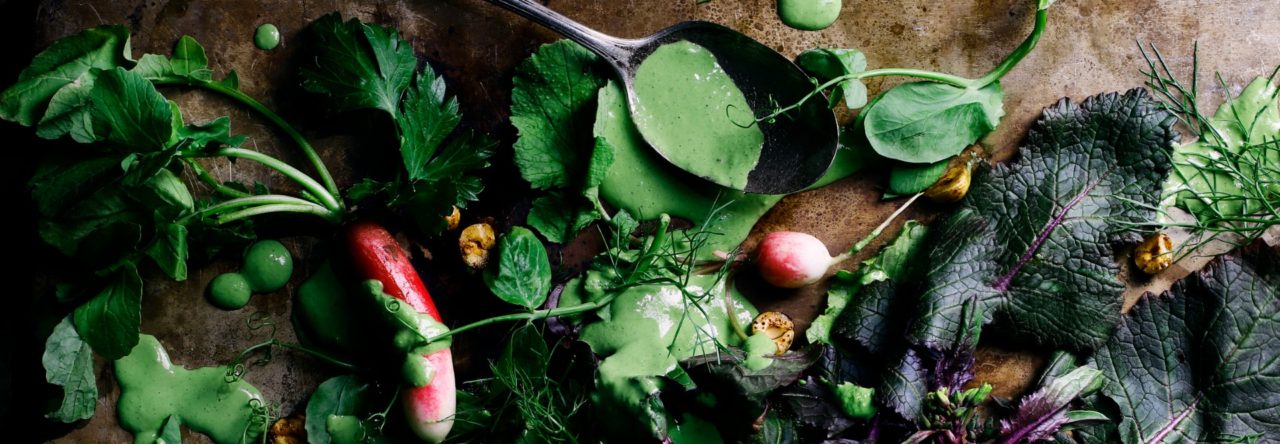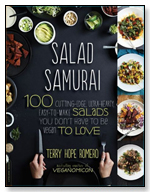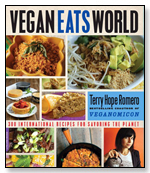Thai Rice Noodles in Sweet Soy Sauce & Greens (Pad See Ew)
Serves 2 to 3
When it comes to Thai noodle dishes for me, it’s usually a toss up between Pad Thai, Pad Kee Mao but often I settle upon Pad See Ew, that sweet and salty dish of chewy noodles and crisp Chinese broccoli. With the right Thai soy sauces and a little luck in tracking down fresh rice noodles, you’ll be able to create something as tempting and tasty as your favorite Thai restaurant. Hunting for the right Thai ingredients will make it worth your while, and a bottle or two of those sauces will last through many memorable meals. Large well-stocked Chinese supermarkets often carry the entire range of Thai sauces (at least in NYC), so stock up on the whole range while you’re there! Once open, store Thai sauces in the refrigerator to maintain the best flavor.
For details on finding and using Thai sweet soy sauce, black soy sauce, light soy sauce and fresh rice noodles please check out the Drunken Noodles (Pad Kee Mao) recipe. Like that recipe, this noodle dish is best prepared in several batches for the best stir fry results. While this can be done in a large skillet (best done in at least 3 batches), a wok will effortlessly produce take-out worthy results.
Noodles and Vegetables
- 12 ounces Thai fresh flat rice noodles or Chinese fresh ho fun
- 3 tablespoons peanut, canola or grapeseed oil, divided
- 5 cloves garlic, roughly chopped
- 1 pound Chinese broccoli, thick stems chopped away from leafy tops
- 8 ounce package fried tofu or 1 recipe Pressed Baked Tofu, sliced into 1/4 inch thin pieces
- 3 scallions, ends trimmed and thinly sliced
- About 1/2 teaspoon ground white pepper for sprinkling (optional)
Pad See Ew Sauce
- 2 tablespoons Thai sweet soy sauce
- 2 tablespoons Thai thin (or light or white) soy sauce
- 4 teaspoons Thai black soy sauce
- 2 teaspoons rice vinegar
- 2 teaspoons brown sugar or grated palm sugar
1. If your rice noodles are very fresh and still soft, you don’t need to cook them. If already sliced, gently separate the noodles and set aside, or re-fold the ho fun several times into a wide tube and slice into wide 2 to 3 inch strips. If the noodles have been refrigerated and are hard, set up a bamboo or metal steamer over boiling water. Steam the Thai noodles or the whole, unsliced ho fun until soft, then turn off the heat and keep covered. If using ho fu, when the noodle is cool enough to handle either slice into strips or tear into pieces about 2 or 3 inches wide with your fingers. Keep covered until ready to use.
2. In a liquid measuring cup whisk together the sweet soy sauce sauce, Thai light soy sauce, black soy sauce, brown sugar, and rice vinegar. Chop the vegetables and tofu and arrange all of the ingredients within easy reach of the stove for the stir fry.
3. Preheat a wok or large skillet over high heat, then pour in the 1 tablespoon of the oil. When the oil is rippling, stir in the Chinese broccoli stems and stir fry for 2 minutes or until bright green. Stir in the leafy tops and fry only until they just start to wilt, about 1 minute and then transfer to a plate. Add another tablespoon of oil, add the garlic and fry for 1 minute. Add the sliced tofu and fry another 2 to 3 minutes until the tofu browns on the edges. Transfer the tofu to the plate with the broccoli.
4. Add the remaining tablespoon of oil, add the scallions and the noodles and stir fry for 1 minute. If the noodles start to stick, dribble in a teaspoon or two of water; whenever sticking starts to happen add a little water but don’t add too much or the noodles will become mushy. Now drizzle on half of the sauce, stir fry for 2 minutes and add the stir fried broccoli and tofu and the remaining sauce. Continue to stir fry for another 1 to 2 minutes or until most of the liquid has been absorbed, everything is coated in sauce and the noodles are gently seared in some places. Transfer immediately to serving plates. Sprinkle the tops of each serving with a dusting of ground white pepper and eat right away!
Variation:
If you can’t find fresh rice noodles, substitute Pad Thai noodles as directed for Pad Kee Mao.
Use watercress, bok choy or any Asian leafy green in place of Chinese broccoli.








